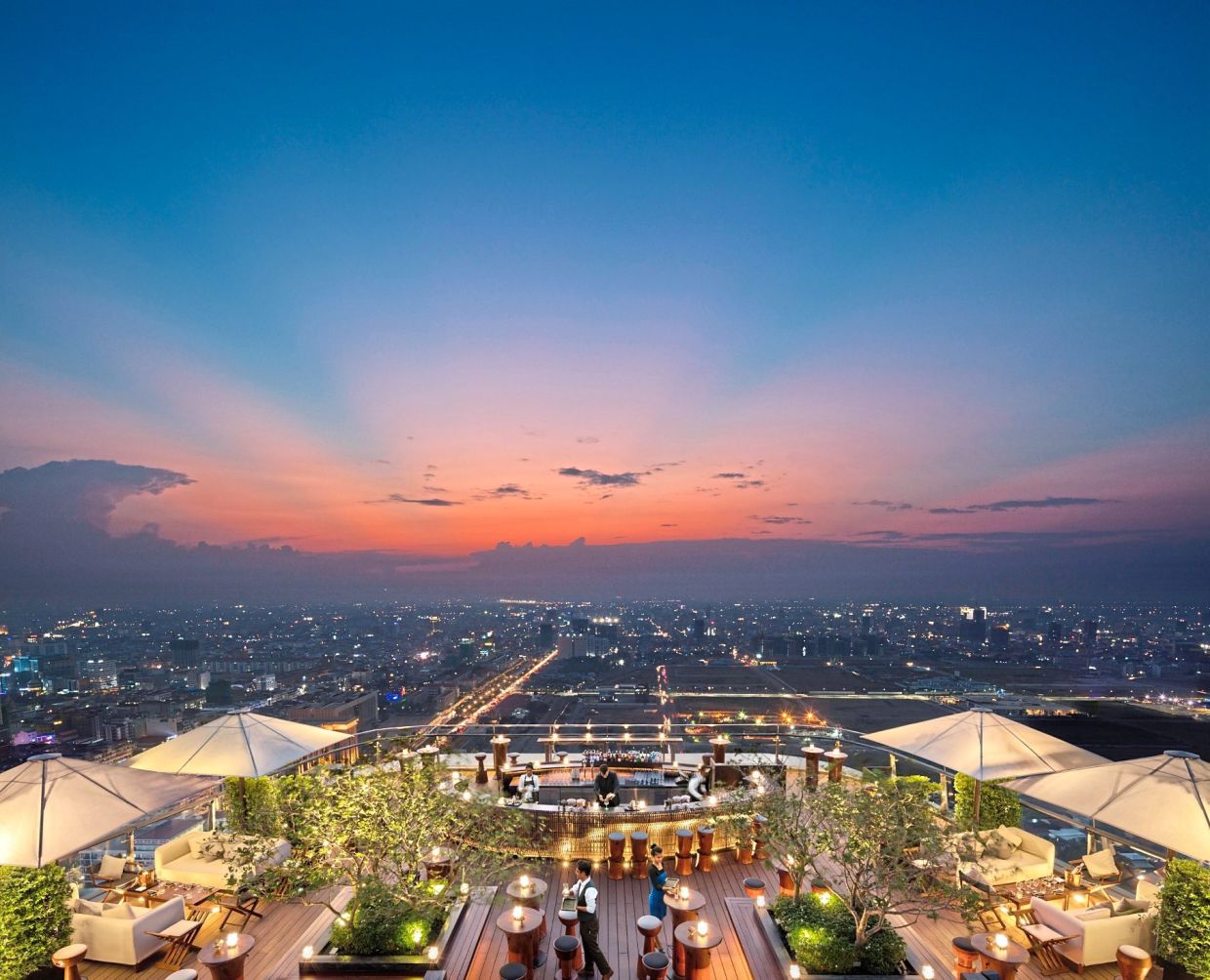
Many supplies for Antarctic research stations need to be brought in by plane. The costs of keeping the stations running and their crews fed and housed are as extreme as the environment itself. Photo: Nasa/Justin Miller/Indiana University/Flickr
It's not only the physical challenges but also the mental side of living in Antarctica that would make a permanent human settlement there difficult.
On Oct 25, 1991, I made my first trip to the US’s Amundsen-Scott South Pole Station. I vividly remember landing on the ice runway onboard a ski-equipped LC-130 Hercules transport.
Upon exiting the aircraft, I experienced a blast of cold air that – despite having lived and worked in chilly Alaska – was somehow profoundly different.
The temperature was a brisk -53.6°C with a windchill of -75.5°C and a wind speed of 9 knots. The physiological altitude was equivalent to being 3,370m above sea level.
We were constantly warned to take it easy upon arrival to avoid experiencing any of the symptoms of high-altitude sickness, such as pulmonary oedemas.
This is one of the highest, driest and coldest places on Earth where humans have a permanent presence.
But living there as a permanent Antarctic resident would be hard, expensive and potentially bad for your health although it does provide a useful analogue for what we might expect on long-duration space flights.
Our arrival also marked the opening day of the station after a long winter where the winter-over crew had spent approximately eight months in isolation.
Only the Russian Vostok Station is higher in altitude further up the polar plateau, and therefore colder, with the lowest ever ground temperature of −89.2°C recorded in the southern winter of 1983.
Living in such conditions comes at a price that people pondering an ice change may not be prepared to pay – both physically and mentally.
These stations must bring in all supplies from the outside and the costs of keeping the stations running and their crews fed and housed are as extreme as the environment itself.
Supplies are brought in by plane and sometimes by tractor traverse, or across the ice, particularly at Vostok Station.
The South Pole station is 1,353m by air and 1,601km by tractor traverse from McMurdo Station on the coast.
Energy has been traditionally provided by diesel generators burning AN8, a jet fuel mixture suited for the cold temperatures of Antarctica.
Approximately 1.7 million litres are used at the station each year and, in 2012, it was estimated that fuel cost between US$9.25 (RM43.50) to US$10.60 (RM50) a litre by the time it travelled from the beginning to the end of the supply chain. The cost has likely increased since.
Fuel is flown in and offloaded from LC-130s after being shipped by tankers to McMurdo Station.
So not only is Antarctica high, dry and cold, it is costly for humans to be there on a permanent basis.
Although coastal Antarctic conditions are not as extreme as the middle of the continent, it is still cold, windy, subject to storms, and extremely isolated from any human population centres.
The sustainability of a permanent settlement with little to no outside support would be fraught with problems.
For example, the ability to grow food is problematic.
Greenhouses could potentially work; however, during the long dark winters, grow lights would be needed – and grow lights consume energy and energy, in the form of fossil fuels, and must be brought in from the outside.
There is potential for other renewable sources of energy involving wind and solar.
Whereas the South Pole is a good candidate for solar during the southern summer, given it has many cloudless days and 24 hours of sunlight, the coast of Antarctica is much more subject to cloudy conditions.
Wind may be a reasonable alternative on the coast, but the extreme cold temperatures are very hard on equipment thereby making wind generators challenging to maintain.
Early Antarctic expeditions, such as Roald Amundsen’s South Pole expedition, took advantage of marine mammal and bird resources for food during their winter-over periods.
However, the Protocol on Environmental Protection to the Antarctic Treaty today prohibits any molestation of the flora and fauna.
A more profound question may be why anyone would want to live in Antarctica permanently.
Antarctic research stations are crewed by adults that are a mix of scientists and support personnel, for example mechanics and electricians. They are there for the sole purpose of scientific research.
Winter-over crews rotate through on a mostly yearly basis. Social and psychological research has documented a wide variety of psycho-social and physiological stresses experienced by winter-over crew members.
For example, long periods of isolation and confinement can lead to increases in tension, anxiety, fatigue and depression.
Research has also found how well people adapt to these conditions and seek social support over time can be influenced by their cultural background.
Indians at Maitri Station reported the highest levels of depression, the Chinese at Great Wall Station reported the highest levels of confusion, whereas the Russians at Vostok Station reported the highest levels of anxiety in contrast to the Americans at South Pole Station who reported the lowest.
But it is important to note the important role of group dynamics: Some winter-over groups do better than others in terms of group cohesion and this impacts overall levels of depression, confusion and anxiety experienced by crew members.
We can only imagine how these psychological and physiological stressors would play out if people lived permanently on the continent.
I have worked with the Inupiaq Alaskan Natives in northwestern Alaska, and they have a culture that has specifically adapted to the isolation and extreme environmental conditions. Permanent settlements would equally require the emergence of an adaptive culture, and all that it entails, in order to survive and flourish.
Antarctica is isolated and hard to get to. Family and friends cannot just hop on a plane and visit.
On the other hand, there are stations in Antarctica that do have whole family units living, working, and going to school at the station.
Both Chile and Argentina have stations that include families in moderate numbers. These stations are on the Antarctic Peninsula where conditions are less extreme, and the bases are nearer geographically to both Argentina and Chile. They are the closest thing to a “normal” community on the continent.
Nevertheless, the stations still need significant outside support for supplies, families still miss out on important life events back home, and residents rotate through on a periodic basis so in essence their stay there is not permanent.
There have been permanent settlements that have existed historically in other extreme and isolated areas, such as South Georgia Island, a British Overseas Territory in the southern Atlantic Ocean.
The island has an important historical connection to Antarctica.
As a part of Ernest Shackelton’s failed Transantarctic Expedition, he sailed 1,253km from Elephant Island off the Antarctic Peninsula to South Georgia Island in a small lifeboat to save his crew after the ship Endurance was caught in the ice and crushed in the Weddell Sea, east of the Antarctic Peninsula.
Shackelton, one of the greatest Antarctic explorers, is buried on South Georgia Island.
There were seven whaling stations on the island from 1904 to 1965. The island had a community of workers and government officials, some with families. There was a Norwegian Lutheran Church and a meteorology station.
Despite being isolated, a community emerged on the island to service the whaling industry for well over 60 years, a company town of sorts. The island was eventually abandoned following the decline of whaling.
Antarctica has a variety of precious minerals and other unexploited natural resources.
The mining and extraction of these resources would have the potential for “company towns” to emerge, not unlike what happened on South Georgia Island.
Economics is a powerful incentive and, without constraints, the emergence of mining settlements in Antarctica would not be beyond the realm of possibility.
Under current treaty agreements, this is not permissible. The 46th Antarctic Treaty Consultative Meeting could determine if this will still be the case in the future. – 360info/Jeffrey C. Johnson
Professor Jeffrey C. Johnson is a Professor of Anthropology at the University of Florida, the United States. He has conducted extensive long-term research supported by the National Science Foundation comparing group dynamics of over-wintering crews at the American South Pole Station, with those at the Polish, Russian, Chinese, and Indian Antarctic Stations. He has also done research funded by the National Science Foundation on Inupiaq Alaskan Natives’ traditional ecological knowledge of sea ice and climate change.








































